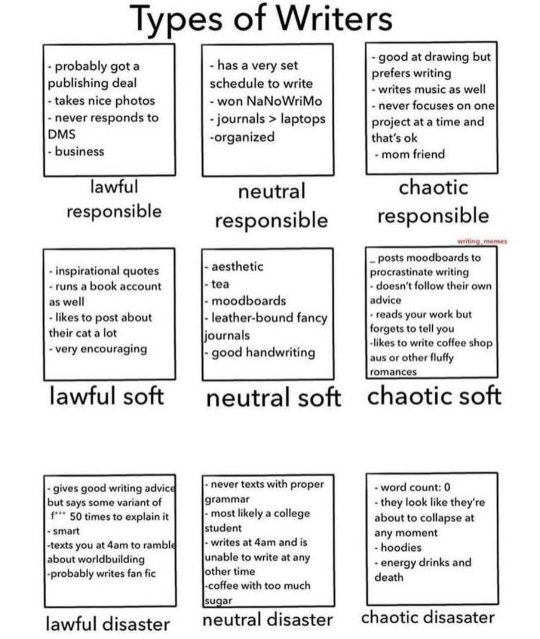Text
Ways For Your Characters to Realize They’re In Love
Marathoning favorite shows/movies of their partner even though they don’t really like it
Watching their partner study for an exam
Seeing their partner sorting candy by color
Hearing the way their partner talks to kids
Looking into their eyes and really looking at their eye color
Noticing small details about them (physically)
When they remember details about their partner
Going on a road trip with their partner and having a good time singing and talking for hours with minimal awkwardness
Seeing how their partner treats another human being/animal
The way their partner looks when they fall asleep/wake up
Seeing their partner make them a meal
Smelling their cologne/perfume in a crowd
Hearing their laugh
Having their partner reach for them without looking because they know they’re there.
Giving their partner a nickname/having their partner give them a nickname
Hearing a song that reminds them of their partner
Standing up for their partner/Protecting them
Catching their eye when they’re in a crowd
When they’re crying
When they pick them up/get picked up by them from work, school, etc.
Seeing how much confidence they have when they talk about something they love
10K notes
·
View notes
Text
What not to write in fantasy.
I’ve seen some posts going around on what not to write in fantasy, many of which amount to:
Don’t write evil kings.
Don’t write people who are evil for the sake of evil.
Don’t write bullies.
Don’t write villains at all actually.
Don’t write mentors.
Don’t let your characters learn how to do hard things on their own though.
Don’t write people on adventures.
Don’t write people fighting evil governments.
Don’t write any fantasy species ever written before.
Don’t write any fantasy trope ever written before.
Don’t write any fantasy plot ever written before.
Just… don’t fucking write fantasy I guess??
And this is such utter bullshit, my friends.
We do need more originality and diversity in fantasy, but we don’t need to remove everything that fantasy is and has been in the process.
(Especially, especially, when diversity is being included in traditionally cishet white male protagonist fantasy stories.)
Maybe the chosen one with special magic powers and a royal bloodline going on a quest with a group of friends to defeat the evil king has been done before with a white cis man a thousand times over, but how many times has a black trans woman got to go on that adventure?
Maybe elves and orcs have been written into the dust, but they still make great templates on which to tell stories with original twists, and there’s nothing about them that stops a good, emotional story from hitting you straight in the heart.
Maybe dragons have been done by every writer ever to write fantasy, but you know what? Dragons are fucking awesome, my dudes. Many readers are always gonna love them.
Maybe we have told the same fantasy stories over and over again, but every step you take away from the known template is a step you have to spend more and more exposition on before the reader will understand your original creation.
So don’t let anyone make you feel like that your (inclusive) fantasy story is too ‘traditional’ to be good. As long as you produce a well written story you’ve put your heart into, it’ll be a story many readers will love.
10K notes
·
View notes
Text
Fantasy Guide to Ships, Boats and Nautical Lingo

Of all the ways to travel in fantasy and historical novels, there are two favoured ones: horses and ships. But I covered the horses already so here we have some ship terminology and kinds of ships.
Common Boat Terms
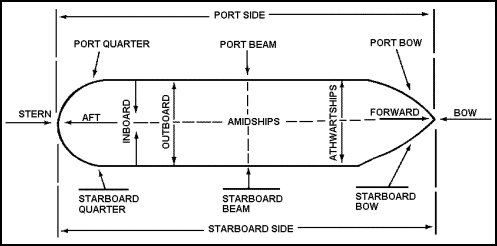
Aft/Stern - The back of a ship.
Bow - The bow is the front part of the ship, the pointy part or the place where Kate Winslet stood on in Titanic.
Port - The left side of the ship
Starboard - The right side of the ship
Windward - The wind the direction is blowing.
Hull- outside of the ship
Leeward - Or sometimes called the lee. This is the opposite direction of the wind is blowing
Boom - A horizontal pole extending from the base of the main mast. It adjusted toward the wind direction in order to harness the wind for the sails.
Rudder - The rudder is a flat piece of wood below the ship, used to steer the ship. It is connected to the wheel of the ship.
Tacking - A common sailing maneuver that involves turning the bow through the wind, to change the wind direction from one side of the ship to the other, making the boom move.
Underway- This is when the ship is moving
Astern- The ship is moving backwards
Amidships- Middle of the boat
Topside- when you move from the lower decks to the upper deck
Compartments of the ship


Most ships would have compartments inside the hull and underneath the deck.
Cabins- most war ships and merchant ships would only have one or two main cabin occupied by the captain and higher crew.
Galley- The kitchen on board the ship. The galley would be fitted with tables and cabinets. Galleys were built in such a way that they were more resistant to the heaving of the ship. Most galleys were built with special stoves to stop people from colliding with them and things from spilling out of pots and pans.
Wardroom- some ships are built with a common room for the crew. The wardroom acted as a common room as well as a dining room. It would usually be conjoined with the galley.
Sick Bay- is the compartment of the ship that is given over to the injured and sick. The sick bay would hold the medicines and medical devices and would often be under lock and key.
Hold- This will be the largest compartment in the ship were the cargo or the ship's weapons.
Crew and Positions aboard the Ship
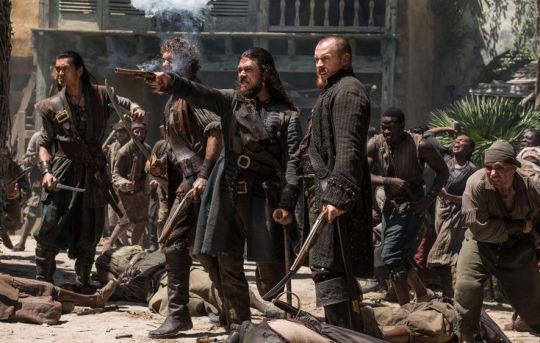
Captain
When we think of captains we imagine them as blackhearted slave drivers (something akin to managers in the customer service industry) but on further research you will find that is not true. There are two kinds of Captains you find in history. Pirate captains and Legitimate Captains. Pirate captains were elected by their merit in battle and dedication to the crew. They were considered equal to the crew, only taking full charge during raids and battles. In the Navy or any legal-bound ship, captains were selected by rank and wealth. There was no equality between captain and crew as in pirate ships. Legal ships were Capitalists and the Pirates were Democratic.
First Mate
First Mate is the captain's deputy. They act as captain when the captain cannot. This was mainly seen in Navies and merchant ships as Pirates usually placed their quartermaster as their deputies.
Quartermaster
The Quartermaster was in charge of ensuring that the ship ran smoothly, rather like the ship's HR manager. The Quartermaster was in charge of supplies and had certain powers such as being able to punish the crew for minor infractions.
Sailing Master
These were officers in charge of piloting the ship. They would have to be educated enough to read a map and was a much desired position because it was a fair paying job. Pirates usually kidnapped sailing masters from ships they attacked to use aboard their own ships.
Gunner
Gunners were the overseers of any many qualified to load and fire guns. They were in charge of aiming cannons and making sure the crew were safely using guns. Most the guns were loaded by young boys called powder monkeys.
Boatswain
Boatswains or junior officers would act as supervisors, watching over the crew as they did their duties. If things were not going well they reported to the captain or quartermaster to punish the crew.
Surgeons
Surgeons handled any diseases and wounds. Since being at sea limited the amount of medicine available. Most ship's surgeons were forced to cut off limbs to avoid infection pike gangrene. Surgeons may not always be found on ships. Cooks or carpenters were often pressed to do amputations: meat was meat and cutting was cutting.
Cooks
All ships needed somebody to cook. Navies and merchant ships would often have trained cooks while on pirate ships it was just a crewmember who was handy in the kitchen.
Kinds of Ship
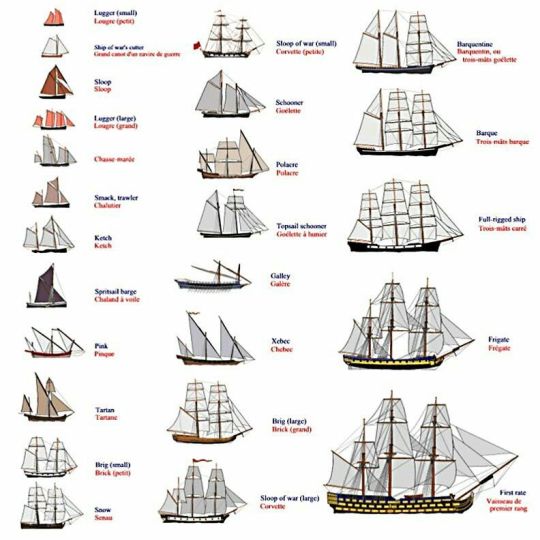
(Not a complete list, may post more later.)
Brig- A brig is the ship that one most thinks of when you think of a ship. The brig is a large vessel, set with a pair of square-rigged masts. Brigs were fast ships and highly maneuverable. They were used as merchant ships and warships.
Galley- The galley is propelled via oars. The hull is long and slender and most of them featured larger sails. Galleys often were rowed by slaves and used in war.
Galleon- Galleons were large ships, built with multiple decks, carrying three or more masts with square raised stern. The Galleon was usually rigged with square sails on the fore-mast and main-masts.
Caravel- The caravel was a small ship with triangular sails, famed for its manoeuvrability and speed.
Longship- The longships were the ships of the Vikings. They were slender ships, narrow. They were able to keep afloat in shallow waters as well as the deep sea. Longships were able to reverse quickly, a very important skill. The longship was a warship, a raider's ship propelled by oars.
Carrack- the carrack was a large ship, often built with mass cargo holds making the most popular ship to go on long voyages on. The carrack had three or four masts.
Cog- This ship was a large vessel, the hull wide and large. The ship is propelled by a great single sail flown from a tall mast.
Junk- The junk or Chinese junk was a kind of coastal or river ship used as merchant ships, pleasure ships and sometimes houseboats. They are small ships and made with battened sails rather resembling wings.
Trireme- the trireme was a slender ship set with three banks of oars pulled by one man each. The trireme had a concave hull and usually had an underwater ram at the prow of the ship.
For @viola-cola
21K notes
·
View notes
Link
Need help keeping track of your Character of Color research?
Well, this free research tracking document is for you! Each tab intends to help sort your research of a Person of Color.
Go as vague or specific as your needs require.
There’s rows to jot in race, gender, orientation, country, time period etc.
From there, the categories include slots to fill in everything from hair care basics to common tropes and stereotypes.
The last page is to collect your favorite writing resources.
Make a copy of the document to change, add and rearrange as you see fit.
–Mod Colette, Writingwithcolor
Again, this is 100% Free and for you!
If you find this chart helpful, noticed categories I may have missed, or have ideas for other Character of Color writing templates please message me on my personal blog: https://lastautumnmaiden.tumblr.com/
2K notes
·
View notes
Text
Fantasy Guide to Royal Households and How they Work

When I say Households, I mean the entourage that follows around the royal family. The household went everywhere with them to care for their needs from the people who would empty their chamber pots to their noble companions. Most royal households are basically the same as noble ones, only on grander scale. Every royal had a household and an entourage as well as every noble at court.
Palace Personnel ~ The Commons
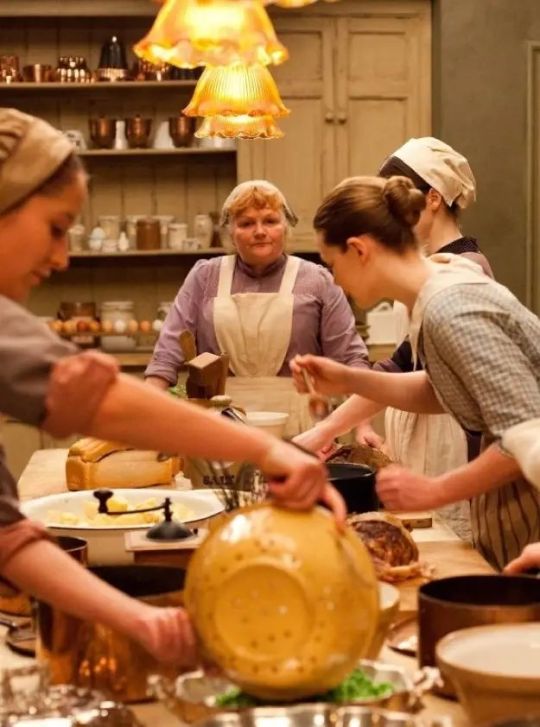
The commons were an intregal part of every household. They made up perhaps 80% of the work force. Royal courts were often on the road and never spent more than a few months at every palace. The court was constantly moving. Some positions were not permanent, meaning certain servants did not travel with the court because they were employed at the palace only. They would be paid by the Monarch's paymaster.
Scullion: The scullion was a relatively easy position to fill so they were often changed as the court went from palace to palace. They would be responsible for scrubbing and cleaning the servants quarters and the kitchens. They would scrub floors with lye, scour pots with sand, sweep put the fireplace and clean up after the other servants. They were the first to rise in a castle and tasked to light all the fires in the kitchens. Scullions would just be employed to the palace and serve a multitude of chambers
Laundress: The laundress was responsible for the cleaning of anything made of fabric in the household. Since they are handling unmentionables, they knew what happened behind closed bedchamber doors. They knew when the King visited the Queen or hadn't, they knew when marriages were consummated or not and they knew when the Queen and royal women were not pregnant. They often sold secrets to pad their pockets. Laundresses might be permanent staff but sometimes not.
Minstrels: The minstrel was a commoner hired to play an instrument or sing for the entertainment of the royal. A royal might staff a few at a time but they would always have one on hand. The minstrel would likely come with their masters as they travelled. The minstrel might serve the main royal household but a royal might retain their own.
Cook: The cook was one of the most important servants in the household. They would have the task of overseeing the running of the kitchens and keeping supplies in order. They would likely be on call at all times. Henry VIII's cook was often woken in the night because his royal master wanted a midnight snack. The cook was a valued member of the household and would have been highly sought after if they were a very skilled cook. They would have travelled with the joint. Cooks were apart of the greater royal household but often royals retained private cooks for their own use.
Maidservant: The maidservant cleans the castle. She would sweep the floors, scrub them, empty the chamberpots, get rid of the ashes from the fire and ready the fire for later. She would make up the bed or strip it for the laundresses. She would wash anything that needed washing including furniture and ornaments. She was likely not a travelling servant and would be strictly employed at a single palace.
Jester: The jester was the hired entertainer. Working under the master of revels, the jester had the daunting task of making the monarch and their family laugh. They would tell jokes, tell stories, cause havoc in the court for laughs and lighten the mood. The most successful jester of all time was Will Somers, jester to Henry VIII. Will broke bad news to the infamously bad tempered monarch and got away with things that would have sent others to the block. Will survived most of Henry's reign, his head intact. Jesters would be apart of the main household though each royal might have one of their own.
Positions within the Royal Household ~ Noble

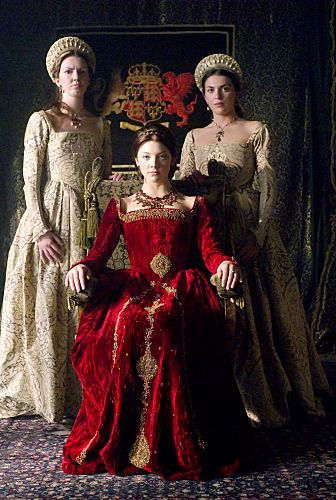
Nobility were always welcomed at court. They eat at court, slept at court and were cared for by the monarch. Some nobles had to sing for their supper and most were hired as royal servants. They weren't exactly scrubbing floors and would be paid handsomely with land that would generate wealth for them
The Steward/Seneschal: This person was the head of the royal's staff. They would have the task of running the lands and servants their master or mistress. The steward served as a backup and assistant in all the tasks even representing their master or mistress when they were unavailable. Would be a high ranking noble. Each royal household would have them.
Treasurer of the Household: The treasurer was the accountant and pay master. They would be in charge of ensuring debts were settled, wages were paid and the household was running within the budget. This was a coveted position because it gave the treasurer insight into the financial situations of the royals. Such info was wroth its weight in gold. Each royal would have one.
Usher: The Gentleman Usher would be in charge of escorting guests into the royal chambers and into the royal presence. They would act as a go between their royal master/mistress and the guest often going back and forth with messages. It was just as coveted as the position of chamberlain but with less responsibilities.
Master of Horse: The Master of Horse was in charge of seeing to the horses of their master. They would oversee the grooms or the stableboy/hands who were employed at the stables to actually care for the horses. The master of horse would ensure that the stables were in order and the horses were up to parr in order to bear royalty across the kingdom. Each royal would have one but there would a main one who acted as overseer.
Master of the Wardrobe/Mistress of the Robes: These are the nobility who are employed to look after the clothes of the royal they serve. This would mainly involve a managerial position, overseeing the inventory of the royal wardrobe (a warehouse like building that housed the clothing) and placing orders for new clothes. It was a tidy job that rarely involved getting the hands dirty. Each royal would have one.
Chamberlain/Valet: The chamberlain is employed to look after the Lord's bedchamber. This was the most sought out position as they effectively were the gateway into the royal presence. Their main task was making sure their boss was comfortable and happy. Could be a well born commoner or a noble. Each royal would have one.
The Page: All royal households had pages. They would be a young noble boy about seven years old sent to their royal master. He would be in charge of tidying up after the lord, carrying messages to other servants and occupants of the castle and serving him at meals. Unlike others on the list, the page would not be paid. His experience was his payment as he would learn the running of a court and how to be courtier. Each royal would have one.
Squires: Squires were like pages though they only served the men. They would accompany their royal master to battle, look after his armour and mail, ensure that his lord's horse was saddled, caring for their master's weapons. The squire would always be a young nobleman on the cusp of becoming a knight.
Governess: The governess is a noblewoman woman employed to oversee the Monarch's children's household. She would be the first teacher a royal child would have and would oversee the nursemaids who would have care of the physical person of the child. She would be appointed when the child was four or five. Notable governesses include Katherine Swynford (wife of John of Gaunt and mother to the Beaufort line), Margaret Pole (wife of Tudor Loyal Sir Richard Pole, sister of the last York heir Edward of Warwick, daughter of George Duke of Clarence and niece to King Edward VI and Richard III), Kat Ashley, Margaret Bryan, Madame de Maintenon and Baroness Lehzen. Most unmarried Princesses retained their governesses while Princes generally outgrew their governesses after they were breeched.
Gentlemen of the Privy Chamber: They were the male companions of a King or Prince, sort of like ladies in waiting but manly. They would accompany the King or Prince everywhere they would go and shared duties with Groom of the Stool (royal toilet paper dispenser) and the Chief Gentleman of the Chamber (overseeing the staff and maintaining the chamber). They would help their master get ready, serve him at the table and organize hunting and games to keep him entertained. Gentlemen and companions where often chosen for their connections as well as their master's own opinion. Henry VIII's gentlemen included: Sir William Compton (ward of Henry VII and heir to rich lands), Sir Henry Norris (the grandson of William Norris who fought with Henry's father at Stroke and a relation to the Yorkists Lovells), Sir Anthony Denny (son of Sir Edmund Denny Baron of the Exchequer) Sir Michael Stanhope (brother in law to Edward Seymour, Duke of Somerset), Charles Brandon (ward of Henry VII and son of Tudor Loyalists)
Ladies in Waiting and Maids in Waiting or Maids of Honour: These are the female attendants to the Queen or Princess. Ladies in Waiting were married while the Maids were unmarried. They would have to attend their mistress wherever she went, help her get ready, keep her chambers in order, write letters for the Queen and maintaining her honour. They were chosen for their connections. Using Katherine of Aragon as an example, her Ladies in Waiting included: Maria de Salinas (daughter of Juan Sancriz de Salinas secretary to Isabella, Princess of Portugal and a Spanish courtier in the service to Katherine's parents, wife of Baron Willoughby de Ersby), Elizabeth Howard (the daughter of Thomas Howard, 2nd Duke of Norfolk, sister to Thomas Howard, 3rd Duke of Norfolk and wife to Thomas Boleyn, ambassador to France), Anne Hastings (daughter of William Hastings, 1st Baron Hastings, wife to George Talbot, Earl of Shrewsbury and Lord Steward.), Agnes Tilney (wife to Thomas Howard, Earl of and 2nd Duke of Norfolk.), Elizabeth Scrope (wife of John de Vere, Earl of Oxford, a loyal Tudor lord), Margaret Scrope (wife of Sir Edmund de la Pole, Earl of Suffolk cousin to the King), Anne Stafford (sister of the Duke of Buckingham, married Sir George Hastings, Earl of Huntington and daughter of Henry Stafford, 2nd Duke of Buckingham (cousin to the King) and Lady Katherine Woodville (sister of King Henry VIII's grandmother and his great aunt by her marriage), Elizabeth Stafford (sister to Anne Stafford wife Robert Radcliffe, Lord Fitzwalter and Earl of Sussex around). Their connections are what got them their places and you can see why they were chosen.
Accommodation
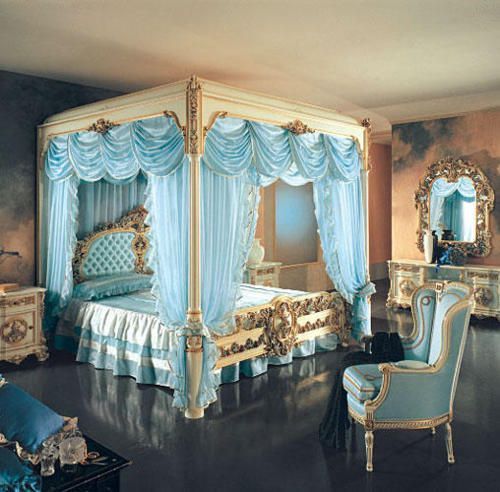
Accommodation can be a difficult thing to sort both as a writer and a steward. You might have a palace of 200+ bedchambers in which you must house a staff of 500-/+, a varying amount of nobles, the royal family (of a varying amount) and their own households. When assigning rooms it is best to think of a Russian nesting doll. Start from the inside and work your way to the outside.
The best rooms go to the monarch, their consort and their children/siblings/parent(s). These chambers would include the bedroom, a drawing room/ common area, a privy, a closet (a small chamber that can be used for prayer or work). They would be furnished with the best cloth, the best candles and whatever furniture brought by the resident since most royal courts travelled from palace to palace. They will also have chambers for their personal servants such as ladies in waiting and grooms.
The second best set of rooms would go to the highest ranking nobles/people in the court. These rooms would be less fancy and a little smaller. These would be given to from titled nobility descending from those of Ducal rank (Dukes/Duchesses) or even members of the council such as Thomas Cromwell in Tudor times.
The next set would be considerably smaller, perhaps minus a closet or a drawing room. Given to lower nobility.
The next level of chambers would be smaller perhaps only the bedroom and a common area given to minor nobles.
The last set of rooms would be small and only hold enough room for a bedroom. Servants would have to sleep on the ground on pallets beside their masters.
Any other guests at court would have to stay at off-site locations around the palace in the city. Some nobles at houses around major palaces just in case they arrived late or were kicked out of court.
18K notes
·
View notes
Text
Physical features to add to any character
Dirty/chewed finger nails
Blemished skin
Chipped nail polish on fingers/toes
Chipped tooth/teeth
Errant curls/hairs that won’t stay down no matter what you do to them.
Unruly eyebrows
Sweats easily
Fidgets constantly/can never sit still
Blinks often
Grinds teeth
Gap in their teeth/Crooked teeth
Chapped lips
Dry skin
Skin is red/irritated
Acne on cheeks, forehead, chin
Dark under eye circles
Eyebrow scar
Uneven dimples
Hair birthmark
Long toes and/or short fingers
Patchy skin
Veiny hands/arms
Chin hairs
Large teeth/small teeth
Broken/crooked nose
Yellow teeth
15K notes
·
View notes
Text
Narrative Anchors: How to hold your readers’ attention, wherever you take them.
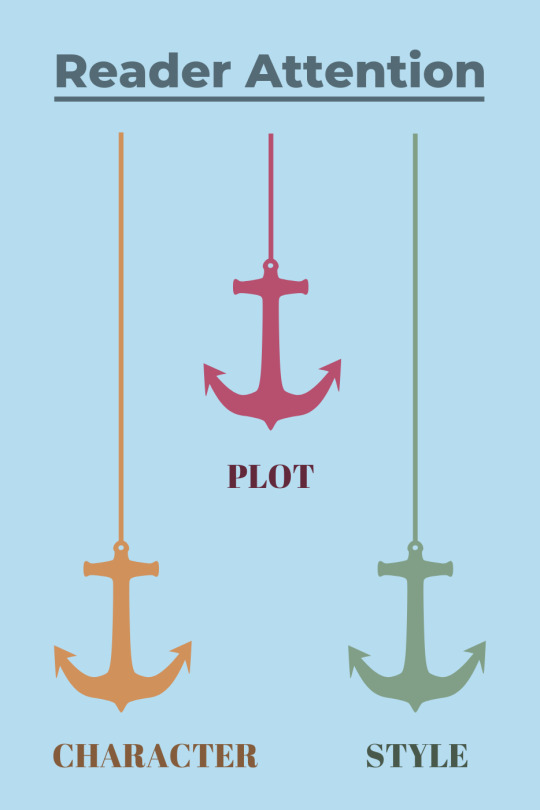
One of my old fiction professors, Tom, used to always grab coffee with us students whenever our story had been workshopped.
We’d meet at the downtown coffee shop, where we fought the flocks of students for a table, pulled out a couple wrinkled copies of the story, and discussed feedback over bland coffee.
It was during one of these discussions that Tom pointed out something I’d stumbled into doing well. (He’s very good at that.)
“I think this is great, Mike,” he said, tapping my story on the table. “From the opening line, the question is whether these two will sleep together, and that grounds us. If my attention ever wavers, I can always fall back on, ‘Oh, well have they slept together yet? No, not yet? Okay, cool. I still know where we are, then, and where we’re headed.’ That makes the story easy to follow.”
This wasn’t, admittedly, a major focus of our conversation. We moved on to discuss more important things (like the story’s key flaws), but somehow that comment stuck with me over the years.
And now, looking back, I realize it was the first time I started thinking about something I’d eventually call “narrative anchors.”
What’s a narrative anchor?
It’s something I made up. But trust me, it’s helpful.
In short, I consider narrative anchors to be the craft elements you include in a story to ground your reader. On the one hand, they can help you craft a story that rings with simple, crystal clarity, and on the other hand, they can empower you to challenge readers with fresh, creative storytelling, without ever losing them at sea.
I put narrative anchors into three categories:
Plot Anchors
Character Anchors
Style Anchors
Plot Anchors
Plot anchors are a clearly defined situation, goal, or destination for a story. Tom (above) pointed out a situational plot anchor in my story, but you’ll find plot anchors everywhere. For example, in Avatar: The Last Airbender, Aang needs to master the four elements and defeat Fire Lord Ozai. We know from the beginning that defeating Ozai is the end-goal, so we feel grounded at every stage of the story, knowing where we’re going.
Moby-Dick, by Herman Melville, is another great example. Ahab is hellbent on hunting down the White Whale, and we never lose sight of that goal, even as the narrative stretches across hundreds of pages.
That’s the point of a plot anchor: to give your reader a clear direction, so they always know where they’re going.
Character Anchors
These anchors are the clear motivations and arcs you give your characters. Disney does this well in their musicals, always using an “I want song” (more about those here) to clearly declare what their main characters want: Mulan wants to express her true self, Hercules wants to find where he belongs, and so on. The rest of the story then circles around that character’s pursuit of their “want.”
When readers have a strong understanding of your character’s motivation and journey, they have a much easier time following the story as a whole.
Style Anchors
Style anchors are my handy little catch-all for every other craft choice you make to bring clarity and simplicity to your work. Style anchors can include: short chapters or paragraphs; simple and accessible language; straightforward writing forms; clarity of description; engagement with the five senses; using a smaller cast of characters; sticking to a single POV; and so on.
Cool. So when (and how) do I use these narrative anchors?
Tip 1: Don’t start with anchors. Start with the story. Take your idea, begin developing the characters and plot, and start writing.
Tip 2: As you write and revise, start thinking about anchors. Ask yourself what kinds of anchors you already have in place, what others may be helpful to add, and whether or not you’re doing enough to ground your readers in the story.
Tip 3: Consider your audience. Readers of popular fiction will want to be reasonably grounded, so you should try to always use at least a few anchors. But if your audience likes super artsy, experimental fiction, you may be able to get away with fewer tethers.
Tip 4: That being said, don’t be afraid to challenge your readers, whoever they are. If you want to get creative, go for it. If you want to experiment with form, language, plot, character arcs, or whatever, PLEASE do!
Tip 5: But when you challenge readers one way, try to compensate by grounding them in other ways. For example, maybe your story lacks a clear plot anchor, but you include a character with a clear arc and motivation. Or maybe your story is incredibly challenging on a stylistic level, but you give readers a clear character motive and plot (this was my experience reading Moby-Dick).
Tip 6: If big anchors don’t fit, consider smaller ones. For example, if your story lacks a BIG plot anchor like defeating Fire Lord Ozai, maybe use smaller plot anchors to drive individual sections of the book. Or maybe instead of a BIG declaration of your character’s motive at the beginning, include little anchors for your narrator that act like breadcrumbs for their motives and development.
Tip 7: Mix and match anchors as necessary, because there is no magic formula.
Long story short?
Write the story you want to write — then use narrative anchors to keep your readers reading, wherever your story takes them.
Tom may not have said that all in so many words, but if I bought him a coffee, I bet he’d agree.
Good luck, everybody, and good writing!
— — —
Your stories are worth telling. For tips on how to craft meaning, build character-driven plots, and grow as a writer, follow my blog.
6K notes
·
View notes
Text
Making your angst hurt: the power of lighthearted scenes.
I’m incredibly disappointed with the trend in stories (especially ‘edgy’ YA novels) to bombard the reader with traumatic situations, angry characters, and relationship drama without ever first giving them a reason to root for a better future. As a reader…
I might care that the main siblings are fighting if they had first been shown to have at least one happy, healthy conversation.
I might cry and rage with the protagonist if I knew they actually had the capacity to laugh and smile and be happy.
I might be hit by heavy and dark situations if there was some notion that it was possible for this world to have light and hope and joy to begin with.
Writers seem to forget that their reader’s eyes adjust to the dark. If you want to give your reader a truly bleak situation in a continually dim setting, you have to put them in pitch blackness. But if you just shine a light first, the sudden change makes the contrast appear substantial.
Show your readers what light means to your character before taking it away. Let the reader bond with the characters in their happy moments before (and in between) tearing them apart. Give readers a future to root for by putting sparks of that future into the past and the present. Make your character’s tears and anger mean something.
Not only will this give your dark and emotional scenes more impact, but it says something that we as humans desperately, desperately need to hear.
Books with light amidst the darkness tell us that while things are hard and hurt, that we’re still allowed to breathe and hope and live and even laugh within the darkness.
We as humans need to hear this more often, because acting it out is the only way we stop from suffocating long enough to make a difference.
So write angst, and darkness, and gritty, painful stories, full of treacherous morally grey characters if you want to. But don’t forget to turn the light on occasionally.
Support Bryn’s ability to provide writing advice by reading their debut novel, an upbeat fantasy about a bloodthirsty siren fighting to return home while avoiding the lure of a suspiciously friendly and eccentric pirate captain!
41K notes
·
View notes
Text
How to write a character-driven plot

The Character-Driven Plot Wheel
1. Emotions drive actions.
Make your hero act on their deepfelt emotions. This not only adds meaning to their actions, but also helps communicate to readers your hero’s core emotional struggle.
2. Actions trigger consequences.
When your hero acts, give their actions consequences that affect the plot, themselves, and/or the surrounding characters. For example, driven by curiosity, maybe your hero opens Pandora’s box; maybe they act recklessly and someone dies; or maybe they stand up for what they believe in, but at great personal cost. Consequences raise the stakes and empower your hero with agency.
3. Consequences compel change.
Use the consequences of your hero’s actions to create a crucible of growth — challenges and situations that force them to take the next step on their character journey. That step may be forward, or backward, and it may be large or small; but something inside them changes.
4. Change influences emotions.
When a character goes through a change, even a small one, allow it to affect them emotionally. Maybe they feel increasingly frustrated or guilty. Maybe they’re afraid, having just taken another step closer to abandoning their old way of seeing the world. Or maybe they finally feel peace.
Regardless of the form it takes, remember to reflect your hero’s change in their emotions. Then let their emotions drive action, to trigger consequences, which will compel further change.
Lather. Rinse. Repeat.
And there you have it! That’s how you write a character-driven plot.
So what do you say?
Give the wheel a spin.
— — —
Your stories are worth telling. For tips on how to craft meaning, build character-driven plots, and grow as a writer, follow my blog.
13K notes
·
View notes
Text
For all those wondering about my WIPs/posted stories.
Unsteady: on hiatus (see above, still trying to work on an update)
HMHN: on hiatus (hoping to get something started back up in a week or so)
Update on all of my WIPs/Stories:
So far I have:
Her Moony, His Nymph : I have written up to Chapter 16. I am wanting this story to have about 20 or so chapters, so it’s at the tail end of this story.
House of Phoenix: super excited (as I always am for a new story 😂) to update you all on this. It is basically a HP/Remadora royalty AU with a mix of inspiration from the Witcher, Game of Thrones and historical/period dramas thrown in among ideas.
Unsteady: this basically started as a way for me to deal with my PTSD disagnose. So this may be a story that will have many breaks in writing. I have written up to Chapter 6 and I hope to tie up the story in about a total of 12 chapters.
One shots/drabbles: I’m always writing these, so if you any prompts/ideas/suggestions, I’d be glad to hear them.
House of Phoenix : so I’m super excited to talk about this (as I am for every story 😂) . This is still a concept that I’m writing but will most liking be posted by the end of the month or the new year. It is an HP/Remadora royalty AU with inspiration from the Witcher, Game of Thrones and royalty period dramas mixed in.
7 notes
·
View notes
Text
Update on all of my WIPs/Stories:
So far I have:
Her Moony, His Nymph : I have written up to Chapter 16. I am wanting this story to have about 20 or so chapters, so it’s at the tail end of this story.
Unsteady: this basically started as a way for me to deal with my PTSD disagnose. So this may be a story that will have many breaks in writing. I have written up to Chapter 6 and I hope to tie up the story in about a total of 12 chapters.
One shots/drabbles: I’m always writing these, so if you any prompts/ideas/suggestions, I’d be glad to hear them.
House of Phoenix : so I’m super excited to talk about this (as I am for every story 😂) . This is still a concept that I’m writing but will most liking be posted by the end of the month or the new year. It is an HP/Remadora royalty AU with inspiration from the Witcher, Game of Thrones and royalty period dramas mixed in.
#remadora#acciocrazychickfics#acciocrazychickfic updates#Harry Potter FanFiction#wip stuff#yes i write remadora fics
7 notes
·
View notes
Photo







the white queen meme: [3/3] couples - edward & elizabeth
What remains is my love for you. You are what sustains me in battle. You are my home.
688 notes
·
View notes
Text
Fantasy Wardrobe: Popular Men's Fashion of History
Fashion is one of my favourite worldbuilding components and choosing which way I want characters to look, is one part of research that is more fun than work. The use of different styles give each culture a defined feel and could act as a symbol of all kinds of lands in your WIP. Since it is your WIP, you can play with different elements of the garments and pay fast and loose with the styles.
Shirt

The shirt is the key to every other item of clothing on this list. The shirt was always worn under everything. It was often made of linen and worn by all classes. The shirt was often embroidered with blackwork and was sometimes even able to peak out from slashings in the garment over it. Shirts were seen as an intimate item of clothing. You should hear about the chaos that occurred when Anne Boleyn found out that Katherine of Aragon was still sewing Henry VIII's shirts.
Tunic

The tunic was worn by all classes. The tunic could be sleeveless or with sleeves. Tunics usually reached the knee or mid thigh when worn in hot climates and could be cut to the hip like a regular shirt today. They were belted at the waist.
Doublet

The doublet was a jacket worn over a man's undershirt. The doublet was usually laced or buttoned up at the front, reaching from the neck of the wearer to the hip of the waist. The doublet was often padded in order to keep the wearer warm.
Jerkin

The jerkin is a tight fitted jacket worn again over the shirt that is buttoned or laced at the front. The jerkin could be worn with or without sleeves. Leather was a popular material for these to be made and was worn by both classes.
Breeches

Are pants. Most breeches stopped at the knee though some reached the ankle, similar to today's trousers. Breeches could be in laced at the front and were worn by every class of men.
Hose

These were a style of pants that usually ended above the knee. Hose were often worn with a codpiece, a rather bold fashion statement for men. Hose would have also been worn with stockings held up by garters. Hose might be padded at the things to add some flare to the look.
Overgown

The overgown is rather like a great loose jacket worn over the doublet or jerkin. It was usually sewn with fur for warmth and made of contrasting fabric than what lay underneath.
Justacorps

This is the classic knee-length coat worn by men 18th century. Men would wear this over a waistcoat and shirt. This was a popular fashion for highborn men. It does still look fine.
Kaftan/ Caftan/Boubou

This is a large robe that is pulled on over the head with long sleeves. It can have a v-neck or round neck. They are usually heavily embroidered.
Achkan/Sherwani

This is the long coat worn by Indian men. It is usually buttoned up at the front, reaches just below the knees and is long sleeved.
18K notes
·
View notes
Text
Fantasy Guide to Feasts, Food and Drink

Picture yourself at a banquet held at the local Lord's castle. The music is playing, the people are chatting and rustling about in their best clothes. You sit at a table and what sits before you? Not chicken nuggets, my friend.
Food is always one of the staples of any world you build. You can get a feel of class, society and morality just by looking at the spread before you on the table.
Food for lower classes (Peasants)
Most peasants lived off the land, rearing flocks, tilling fields and tending orchards. If they lived near the sea, lakes, rivers or streams, they would fish. But since they lived on land owned by churches or lords, they would only be allowed a portion of what they grew. In cities, the peasants would buy food from one another at the market.
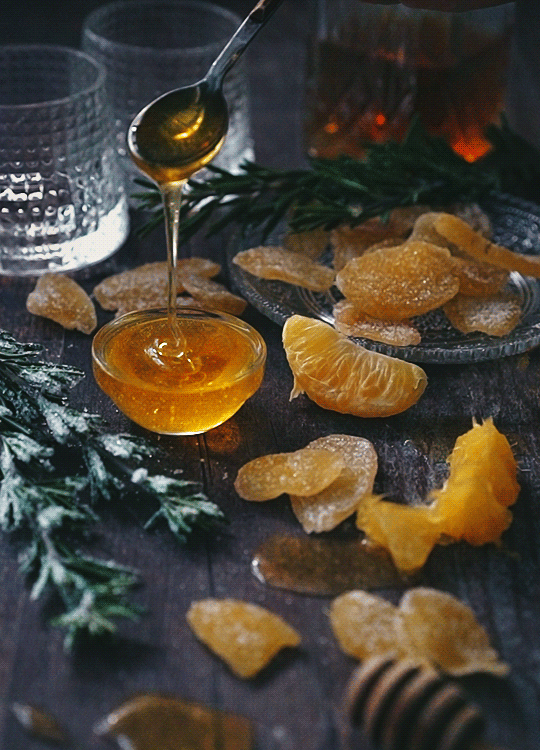
Peasants would make bread out of rye grain, that would make the bread very dark. In some communities they would make sourdough, which involves using a piece of dough you made the day before to make that day's bread.
Eggs were a source of food that was easy to come by as farmers kept chickens on hand.
Cheese and butter would be sold and used in the farm.
Jam would also be made as it was easy to preserve and sell.
Peasants would not eat much meat. Chickens made money by laying eggs, pigs could be fattened and sold for profit and cows and goats would be used for milk. By killing any of these animals for food they would loose a portion of money. Poaching (hunting on private land owned by the lord) would come with severe penalties.
Pottage and stew were a favourite of peasants as they could throw any vegetables or bit of meat or fish in a pot to cook for a few hours. It wasn't a difficult dish to make and often inexpensive.
Pies, pasties and pastries would be a favourite at inns and taverns in towns and cities most containing gravy, meat and vegetables.
With most villages and farms set close to forests, many peasants could find berries at the edge of fields. Blueberries, blackberries, raspberries would have all grown wild.
Food for Nobility & Royalty

Nobility and Royalty could always afford better food than the poor. However it might be a patch more unhealthy than the poor's fare. Nobility and Royalty weren't fans of vegetables.
The rich would eat a lot of meat, much of which they would hunt down themselves on their own land. Deer, wild boar, rabbits, turkey and other wild creatures would all be on the table.
Nobility and Royalty would be fond of fish as well. Lamprey eels was a delicacy only preserved for special occasions.
They could afford salt which was important for preserving meat and fish. This would allow the castle/manor/palace to be stocked in times of winter or famine.
They could also afford pepper and other spices, all of which could cost a fortune, to flavour their food.
During a feast, they would eat off of platters made of precious metals but only if you were seated at the high table. Other less important guests would eat off a trencher, a piece of hollowed out stale bread.
Sugar would be the height of dessert. The sugar would be shaped into fantastical formations to impress the noble guests. Tudor chefs would create edible sugar plates for Henry VIII to eat off of.
Swans and peacocks would be served in their plumage. Swans would be more royal diners as in England the monarch owns all the swans. In Ireland, it is illegal to kill a swan mainly because they could be children trapped in swan-bodies. Long story.
Feasts
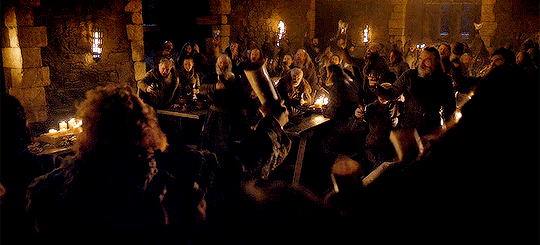
At certain events, the noble/monarch might throw a party. Most parties would begin with a dinner.
The high table would seat the family throwing the party and the honoured guests. All the food would come to them first to be distributed to their favourites. They would drink the best wine and have the finest bread.
The rest of the hall would be seated together at trestle tables, eating off trenchers. They would be sent food by the thrower of the feast on account of their personal importance or social standing. The closer you were to the salt cellar, placed at the head of the table the more important you were. The further away you were, the lower your status.
Servants called cupbearers would serve wine and drink and move about the hall to carry jugs of wine to water the guests.
Dogs would often be found in the hall, to be fed scraps by the diners.
Drink

No world or party is complete without the booze. Since much of the water in Mediaeval times was putrid or dirty, the classes would avoid it.
Beer: was both a favourite of peasants and the nobility. It would be brewed in castles or in taverns and inns, each site having a different recipe and taste. It would be stored in barrels. Beer was widely available across the world and could be brewed at home. So therefore it was inexpensive.
The two main types of beer would be:
Ale: Ale in the middle ages referred to beer brewed without hops (a kind of flowering plant that gives beer its bitter taste). It is sweeter and would typically have a fruity aftertaste.
Stout: is a darker beer sometimes brewed from roasted malt, coming in a sweet version and dry version, the most famous stout being Guinness.
Wine: Wine would be made on site of vineyards and stored in cellars of large houses or castles. They would be expensive as they would have to be imported from regions capable of growing vines.
Port: Port wine or fortified wine would be made with distilled grape spirits. It is a sweet red wine, and also would be expensive to import from the counties able to grow the correct vines.
Whiskey: is a spirit made from distilled fermented grain mash in a device called a still (which would always be made of copper). The age of whiskey is determined by the length of time it has been sitting in a cask from the time it is made to the time its put in bottles. Whiskey was a favourite drink in colder climates and could be made any where in the world.
Rum: Rum is made by fermenting and distilling sugarcane molasses/juice. It is aged in oak barrels and would have to be imported as it could only be made in lands able to grow sugarcane.
Poitín: (pronounced as pot-cheen) is made from cereals, grain, whey, sugar beet, molasses and potatoes. It is a Dangerous Drink (honestly i still don't know how I ended up in that field with a traffic cone and a Shetland pony) and technically illegal. Country folk in Ireland used to brew it in secrets in stills hidden on their land.
9K notes
·
View notes
Text
Fantasy Wardrobe: Dressing Your Monarch

When dressing the most important person in your kingdom, it is important that you take the time to choose exactly what they are saying by wearing that particular piece of clothing. When thinking of your monarch, it is best you imagine them as a mannequin in a shop window advertising something. There is a message in their clothing and it's up to you to choose the right one.
Materials and Cut

The monarch will usually have the very best of the best. Their silks will be the softest, their velvets will be the plushest and their lace will be the most intricate. Extra ruffles, drapes and pleats used more material than needed, which screams wealth. Doublets and jackets with slashings showed a range of materials and gowns were often made with overlapping fabrics. Your monarch has to choose whether to go the extremes of Marie Antoinette and Louis XIV or the austerity of Princess Elizabeth during WWII. They can either alienate their poorest subjects by dressing in millions of euros worth of cloth with ruffles or they can dress smartly and elegantly and humanize themselves.
During the post-war years, Christian Dior brought out his first designs (some which look bitchin' today btw) and when he showed his designs to the BRF's women, the future Queen Elizabeth did not take part. For years she only wore English designers for years. She was praised for keeping to austerity and supporting the British fashion designer.
When Queen Victoria ordered her wedding dress, she stipulated that she wanted only English lace used which boosted the economy. Home businesses who made lace made thousands. And also Victoria is credited (though Mary Queen of Scots did it first) with the first white wedding dress, which screamed wealth because it was so white and she would only wear it once.
Louis XIV made all his courtiers dress a certain way using only French materials, which also boosted that trade. He was a fashion icon btw.
Colours

Colours speak louder than words. Many royal houses had an official colour of mourning when a relative or a close family friend died. France had white and the Plantagenets wore dark blue when mourning. By choosing the right colour, you can mirror what your monarch is feeling or what they want to say.
As we said before white could be mourning colour and a very ostentatious colour to wear because it takes so much effort to keep clean. White also speaks of purity, grief and innocence.
Red would be a common colour used for royal coronation cloaks and regalia. Red is the colour of nobility, luck, prosperity, long life, fertility, power, strength, courage and it is a colour of luxury.
Pink is the colour of femininity/masculinity, love, sweetness, innocence. It is a soft colour and doesn't exactly shout wealth.
Orange is a peculiar colour and a favourite of Elizabeth I. It stands for spirituality.
Yellow was the royal colour of mourning for Spain. Yellow could also be worn to hint gold but isn't. It look opulent but isn't exactly.
Green is the colour of spring and rebirth. Henry VIII often cosplayed Robin Hood. It is a relatable colour for all classes.
Blue is the colour of peace, loyalty, reliability, honor, trust. The Order of the Garter have deep blue regalia and embody all these traits.
Purple of course stands for Imperial might and royalty. A monarch would probably avoid constantly wearing purple as it would advertise their royal status. They might save it for special occasions.
Queen Elizabeth II is very conscious of colour as you can see. Her blinding and borderline neon suits are that way for a reason. She makes herself stand out in a crowd so even the subject the farthest from her can recognize her.
Elizabeth I was also very conscious of colour. She was the Virgin queen and often emphasized this by wearing white.
Victoria also knew the power of colour and like her great-great granddaughter chose colours that made her stand out. At a party in Scotland, Victoria had been wearing tartan the entire trip but on the last night, she wore pale pink to stand out.
Symbols

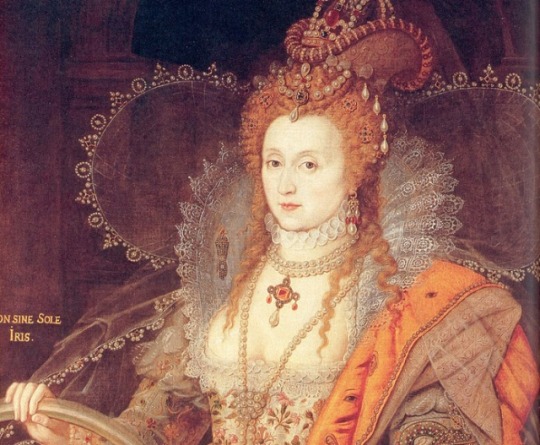

Symbols are often sewn on royal clothing as a blatant way of passing on the message.
Louis XIV or the Sun King, often kept stating his nickname through the use of golden material and sun emblems. Being the Sun King was his persona and for somebody who believed himself to be at the centre of the world, it was an important reminder to those who caught a glimpse of him. The great pad of fur on his robes so excess and wealth. The fleur de lys on his mantle stand for the French royal family.
Elizabeth I's famous Rainbow Portrait offers the best symbols. The snake on her sleeve symbolizes how wise and cunning she is. The rainbow in her hand stands for peace and prosperity. The suns stand for monarchy.
The portrait of Henry VIII here is a trove of symbols. The padded shoulders for power, the slippers to show his wealth and of course the bulging codpiece stands for the fertility that Henry thought he had.
Accessories

We all love a bit of bling and no royal is complete without some sparkle. Different accessories stand for different meanings.
Elizabeth I wore ropes and ropes of pearls which underlined her Virgin Queen statues. She also wore her coronation ring to prove that she was "married to England".
Queen Alexandra was given a tiara by the English people on her arrival. The Kokoshnik tiara was made to mirror her sister's the Russian Empress's. It was in order to remind the sister's of their bond but also show that the English Princess of Wales and future Queen was on par with the Russian Empress.
Around the time of the 18th Century, military dress uniforms became the fashion for men and especially younger princes. The military dress uniform is a very open symbol of service to the people. Which is why the male members of the BRF often wear them to state events.
3K notes
·
View notes
